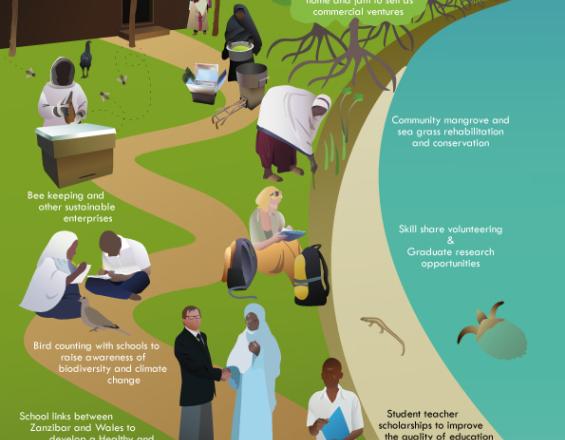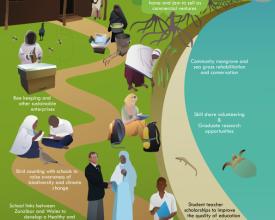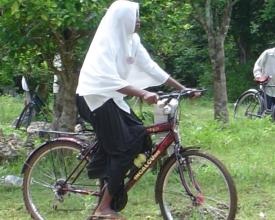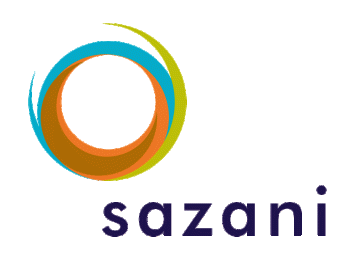
Climate change Adaptation, Sustainably Aware (CASA)

Sazani has piloted and expanded an approach to support the development of sustainable livelihoods through education and training in Zanzibar, incl. the delivery of a curriculum to embed Education for Sustainable Development into teacher training and classroom delivery; Provision of training in climate smart appropriate technologies; Supporting climate smart enterprises, incl. jam production using rocket stoves, solar drying as well as bee keeping, mud crab fattening and sustainable agriculture.
Contexto
Défis à relever
Rural people in Zanzibar remain in extreme poverty. The growth of tourism competes with local subsistence activities that draw on the assets of the poor. The decline of livelihoods and increase in population results in overuse of resources. Tourism exasperates the problem through overexploitation of natural capitals. Communities need to be aware of the importance of coastal resources to their livelihoods. A lack in understanding and awareness or skills for viable sustainable livelihood activities is a problem.
Ubicación
Procesar
Summary of the process
Building Blocks
Livelihoods analysis of assets and strengths
Enabling factors
Lesson learned
Resources
Mapping of policy makers and institutional influences
Enabling factors
Lesson learned
Resources
Space for cross-sectoral global learning
Enabling factors
Lesson learned
Resources
Sustainable change outcomes
Enabling factors
Lesson learned
Resources
Technical support
Enabling factors
Lesson learned
Resources
Critical reflection and review
Enabling factors
Lesson learned
Resources
Impacts
- Increased understanding and awareness of what people have and the changes they want for sustainable livelihoods.
- Development of adaptive capabilities to address and cope with climate change shocks.
- Rural women, men and youth utilise new skills in climate smart technologies.
Beneficiaries
Rural men, women and youth; secondary school teachers in Unguja and Pemba and vocational training centre trainers in Unguja.








